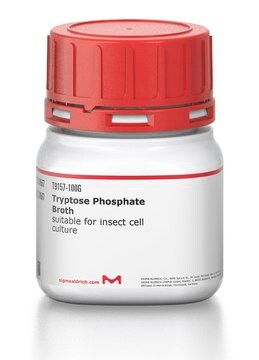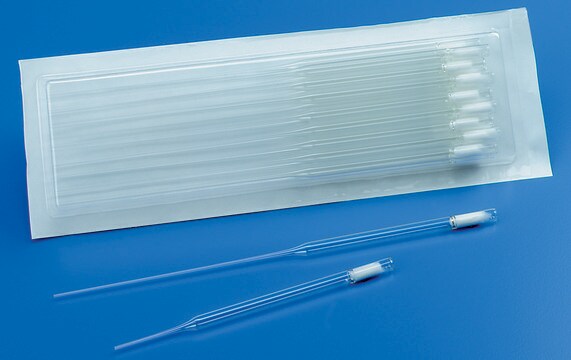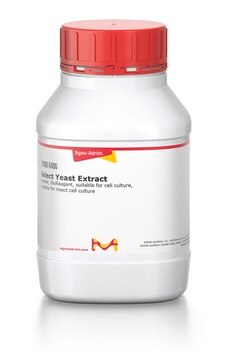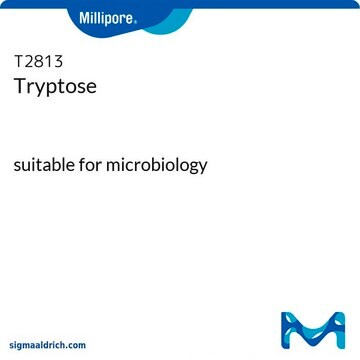T8159
Tryptose Phosphate Broth solution
sterile-filtered, suitable for cell culture
Synonym(s):
TPB solution
About This Item
Recommended Products
sterility
sterile-filtered
form
solution
concentration
29.5 g/L in deionized water
technique(s)
cell culture | mammalian: suitable
shipped in
ambient
storage temp.
room temp
Application
Components
Storage Class Code
10 - Combustible liquids
WGK
WGK 2
Flash Point(F)
Not applicable
Flash Point(C)
Not applicable
Regulatory Listings
Regulatory Listings are mainly provided for chemical products. Only limited information can be provided here for non-chemical products. No entry means none of the components are listed. It is the user’s obligation to ensure the safe and legal use of the product.
JAN Code
T8159-100ML:
T8159PROC:
T8159-PH:
T8159-VAR:
T8159-BULK:
Choose from one of the most recent versions:
Already Own This Product?
Find documentation for the products that you have recently purchased in the Document Library.
Customers Also Viewed
Our team of scientists has experience in all areas of research including Life Science, Material Science, Chemical Synthesis, Chromatography, Analytical and many others.
Contact Technical Service












